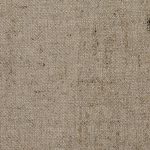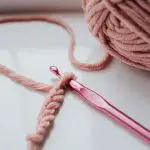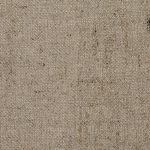To refresh your dry-clean-only clothes at home, start by using a garment steamer to eliminate wrinkles and odors. You can make a DIY fabric freshener by mixing distilled water, vinegar, and essential oils for a pleasant scent. For spot cleaning, gently dab stains with a mild detergent solution. Always air dry your garments flat, and store them in breathable garment bags to keep them fresh. If you’re curious about more techniques, there’s plenty more to explore!
Table of Contents
Key Takeaways
- Use a garment steamer to gently eliminate wrinkles and odors without saturating the fabric.
- Create a DIY fabric freshener with distilled water, vinegar, and essential oils for a pleasant scent.
- Hand wash delicate items in a cool, gentle detergent solution, avoiding wringing to maintain fabric integrity.
- Store clothes in breathable garment bags in a cool, dark place to prevent fading and maintain freshness.
- Regularly inspect for signs of damage and seek professional help for persistent stains or odors.
Understanding Your Fabrics: What Does “Dry-Clean-Only” Mean?
When you see the label “dry-clean-only,” it can feel a bit like a puzzle. This label usually indicates that the fabric is delicate or sensitive to water, and washing it at home might cause damage.
Common fabrics like silk, wool, and some blends often fall into this category. The dry-cleaning process uses chemical solvents instead of water, which helps preserve the fabric’s structure, color, and texture.
By avoiding water, dry cleaning reduces the risk of shrinking, warping, or fading. Understanding this label helps you make informed choices about caring for your clothes.
If you’re unsure about a specific item, consider its fabric composition and your garment’s overall construction to determine the best care approach.
The Power of Steaming: How to Use a Garment Steamer
Although dry-clean-only clothes require special care, steaming can be an effective way to refresh them without risking damage.
Start by filling your garment steamer with water and allowing it to heat up. Hang your clothing on a sturdy hanger, ensuring it’s at eye level. Hold the steamer about six inches away from the fabric, and gently press the steam button. Move the steamer in a downward motion, letting the steam penetrate the fibers.
Fill your garment steamer with water, heat it up, and gently steam your clothing for a refreshed look.
Focus on areas with wrinkles or odors, but avoid staying in one spot too long to prevent moisture buildup. Once you’re done, let the garment air dry for a few minutes.
You’ll find that steaming not only removes wrinkles but also revitalizes the fabric’s appearance.
DIY Fabric Fresheners: Making Your Own Spray
Steaming is great for revitalizing dry-clean-only clothes, but if you want to add a pleasant scent, making your own fabric freshener spray is a simple solution. Here’s a quick guide to help you mix your own:
| Ingredient | Purpose |
|---|---|
| Distilled Water | Base for the spray |
| Essential Oil | Adds fragrance |
| Vinegar | Neutralizes odors |
| Rubbing Alcohol | Disinfects and invigorates |
| Spray Bottle | Container for mixture |
To create your freshener, combine one cup of distilled water, a tablespoon of vinegar, and 10-15 drops of your favorite essential oil in a spray bottle. Shake well before each use, and lightly mist your clothes for an invigorating boost!
Gentle Hand Washing: A Safe Method for Delicate Fabrics
When it comes to rejuvenating your delicate fabrics, gentle hand washing is a safe and effective option.
First, you’ll need to gather the necessary supplies and prepare a gentle washing solution.
After washing, make sure to rinse and dry your clothes properly to keep them looking their best.
Gather Necessary Supplies
Before you plunge into revitalizing your dry-clean-only clothes, it’s essential to gather the right supplies to guarantee a gentle hand washing process.
Start with a clean, spacious basin or sink to prevent any damage. You’ll need a mild detergent specifically designed for delicate fabrics; this helps avoid harsh chemicals that can harm your clothes.
A soft-bristle brush or sponge is useful for tackling any stubborn spots without compromising the fabric’s integrity. Finally, have a clean towel on hand for drying.
You might also want a clothesline or drying rack to air dry your garments, as this prevents shrinkage and maintains their shape.
With these supplies ready, you’ll be set for a successful hand washing experience.
Prepare Washing Solution
With your supplies in hand, you can now prepare the washing solution that’ll keep your delicate fabrics safe while revitalizing them.
Start by filling a clean basin or sink with cool water. Aim for a gentle temperature, as hot water can damage sensitive materials.
Next, add a small amount of a gentle detergent specifically designed for delicates. Be careful not to overdo it—just a teaspoon should suffice.
Stir the water gently to disperse the detergent evenly. Once mixed, you’re ready to immerse your clothing.
Rinse and Dry Properly
After you’ve gently washed your clothes, it’s essential to rinse them properly to remove any detergent residue.
Fill a clean basin with cool water and submerge your garments, swirling them gently. Avoid wringing or twisting, as this can damage delicate fabrics. If the water becomes soapy, drain and refill the basin for a fresh rinse.
Once rinsed, lift the clothes out carefully, allowing excess water to drip off. Lay them flat on a clean, dry towel, roll the towel to absorb moisture, then unroll and let the garments air dry on a drying rack or flat surface.
Keep them away from direct sunlight to prevent fading. This method helps maintain the integrity and appearance of your delicate items.
Spot Cleaning Techniques for Stains and Marks
Sometimes, a small stain or mark can ruin the appearance of your dry-clean-only clothes, but you don’t have to panic.
Start by gently blotting the stain with a clean, dry cloth to absorb excess liquid. If it’s a tough stain, mix a few drops of mild dish soap with water, dip a soft cloth into the solution, and lightly dab the area. Avoid scrubbing, as this can damage the fabric.
Gently blot stains with a dry cloth, then dab with a mild soap solution—no scrubbing to protect the fabric.
For oily stains, you can sprinkle a bit of cornstarch or talcum powder, let it sit for a few hours, and then brush it off.
Always test any cleaning solution on an inconspicuous area first to verify it won’t harm the fabric.
With these techniques, you can keep your clothes looking fresh.
Drying Methods: Keeping Your Clothes Safe and Fresh
To guarantee your dry-clean-only clothes maintain their shape and quality, choosing the right drying method is essential. Here are some effective techniques to keep your garments fresh:
| Drying Method | Benefits |
|---|---|
| Air Drying | Preserves fabric integrity |
| Lay Flat | Prevents stretching from hangers |
| Use a Drying Rack | Provides good air circulation |
| Avoid Direct Sunlight | Prevents fading and damage |
| Steaming | Removes wrinkles and freshens |
Storage Tips: Maintaining Freshness Between Wearings
When you want to keep your dry-clean-only clothes fresh between wearings, proper storage is key.
First, make certain your garments are clean and completely dry before putting them away. Use breathable garment bags instead of plastic, as these allow air circulation and prevent moisture buildup.
Store your clothes in a cool, dark place to protect them from fading and damage. Avoid cramming them into tight spaces; hang them properly to avoid wrinkles and maintain their shape.
You can also add cedar chips or lavender sachets to deter moths and keep your clothes smelling fresh.
Finally, check on your stored items occasionally to verify they stay in top condition until you’re ready to wear them again.
When to Seek Professional Help: Recognizing the Limits of Home Care
Sometimes, home care just isn’t enough.
If you notice severe damage or persistent stains and odors that won’t budge, it’s time to call in the professionals.
Recognizing these signs early can save your favorite garments from further harm.
Signs of Severe Damage
While you might be tempted to tackle every stain or wrinkle on your dry-clean-only clothes at home, some signs of severe damage indicate it’s time to call in the professionals.
Ignoring these signs can lead to further damage, making repairs more challenging and expensive.
Look out for the following:
- Frayed seams or loose threads: This can worsen with improper handling.
- Discoloration or fading: If colors are bleeding or becoming dull, it’s a sign of irreversible damage.
- Tears or holes: These require specialized stitching that you likely can’t do at home.
- Shrinking or stretching: If the fabric’s shape is compromised, a professional can help restore it.
When you spot these issues, don’t hesitate—seek expert help.
Persistent Stains and Odors
Even if you’ve tried various home remedies, persistent stains and odors on your dry-clean-only clothes can signal that it’s time to call in a professional.
If you’ve applied spot treatments, aired out the fabric, and even used fabric fresheners without success, don’t hesitate to seek help. Professionals have specialized cleaning solutions and techniques that can tackle tough stains and lingering smells that home methods simply can’t eliminate.
Also, if you notice that the fabric has started to change texture or color despite your efforts, it’s a clear sign you need expert intervention.
Ignoring these issues can lead to permanent damage. Trust your instincts; when home care falls short, reaching out to a professional can save your beloved garments from further harm.
Frequently Asked Questions
Can I Use a Regular Iron on Dry-Clean-Only Fabrics?
You shouldn’t use a regular iron on dry-clean-only fabrics. The heat can damage delicate fibers. Instead, consider using a steamer or follow care instructions to maintain the garment’s integrity and appearance.
How Often Should I Refresh My Dry-Clean-Only Clothes at Home?
You should refresh your dry-clean-only clothes every few wears, depending on how often you use them. Regularly airing them out helps maintain their freshness and appearance, keeping your wardrobe looking sharp and well cared for.
What Types of Fabrics Are Typically Labeled as Dry-Clean-Only?
Imagine you’ve got a luxurious silk blouse. Fabrics typically labeled as dry-clean-only include silk, wool, and rayon. These materials often require special care to maintain their appearance and texture, preventing damage from regular washing.
Are There Specific Detergents for Dry-Clean-Only Garments?
Yes, there are specific detergents designed for dry-clean-only garments. You should look for gentle, non-toxic options that are safe for delicate fabrics. These products help maintain the integrity of your clothes while providing a revitalizing clean.
Can I Mix Different Dry-Clean-Only Fabrics When Refreshing?
Isn’t it amusing how you can’t mix your favorite fabrics? While it seems tempting, mixing different dry-clean-only materials can lead to unexpected damage. Stick to revitalizing one type at a time for best results.
- Nonwoven Vs Woven Geotextile: a Project-Based Decision Guide - July 12, 2025
- Can You Sublimate on Nonwoven Fabric? A Complete Guide - July 12, 2025
- The Ultimate Guide to Nonwoven Interfacing Types for Sewing - July 12, 2025







